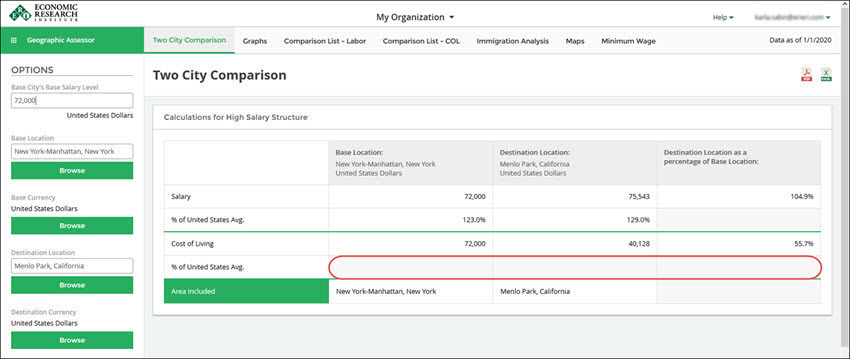QUESTION: Why is the % of National Average COL missing in the Two City Comparison table?
The % of National Average cost of living line of the Two City Comparison table expresses the relationship of each city (both Base City and Destination City, each compared separately) to the National Average spending pattern at the given Earnings level (i.e., this would be the percentage as compared to the cost of purchasing the same goods and services or maintaining the same standard of living at the National Average).
When calculating cost of living in the Two City Comparison table, the Geographic Assessor database assumes a set percentage of after-tax Miscellaneous expenses for the Base City, which may be defined as any number of "additional" expenditures (e.g., charitable contributions, tuition for dependents or child care, insurance premiums or deferrals, personal savings, investments, credit card debt payments, vacations, etc.). When the Miscellaneous value is a negative number, the % of National Average becomes an invalid percentage and is not shown in the original Two City Comparison table (see note below).
In most cases, when the program calculates a negative Miscellaneous value, the explanation is that the default spending pattern (based on the National Average) is too "rich" for the expensive Base City. For example, if you have selected New York-Manhattan, as your Base City, the costs to buy the National Average lifestyle in this relatively expensive city will exceed the spending level specified.
Note: The Miscellaneous value is not displayed in the original Two City Comparison table; rather, it is a calculation underlying the cost-of-living values displayed. The updated Two City Comparison, which allows for detailed cost-of-living analyses, includes a separate line for the Miscellaneous value that can be customized by the user.
